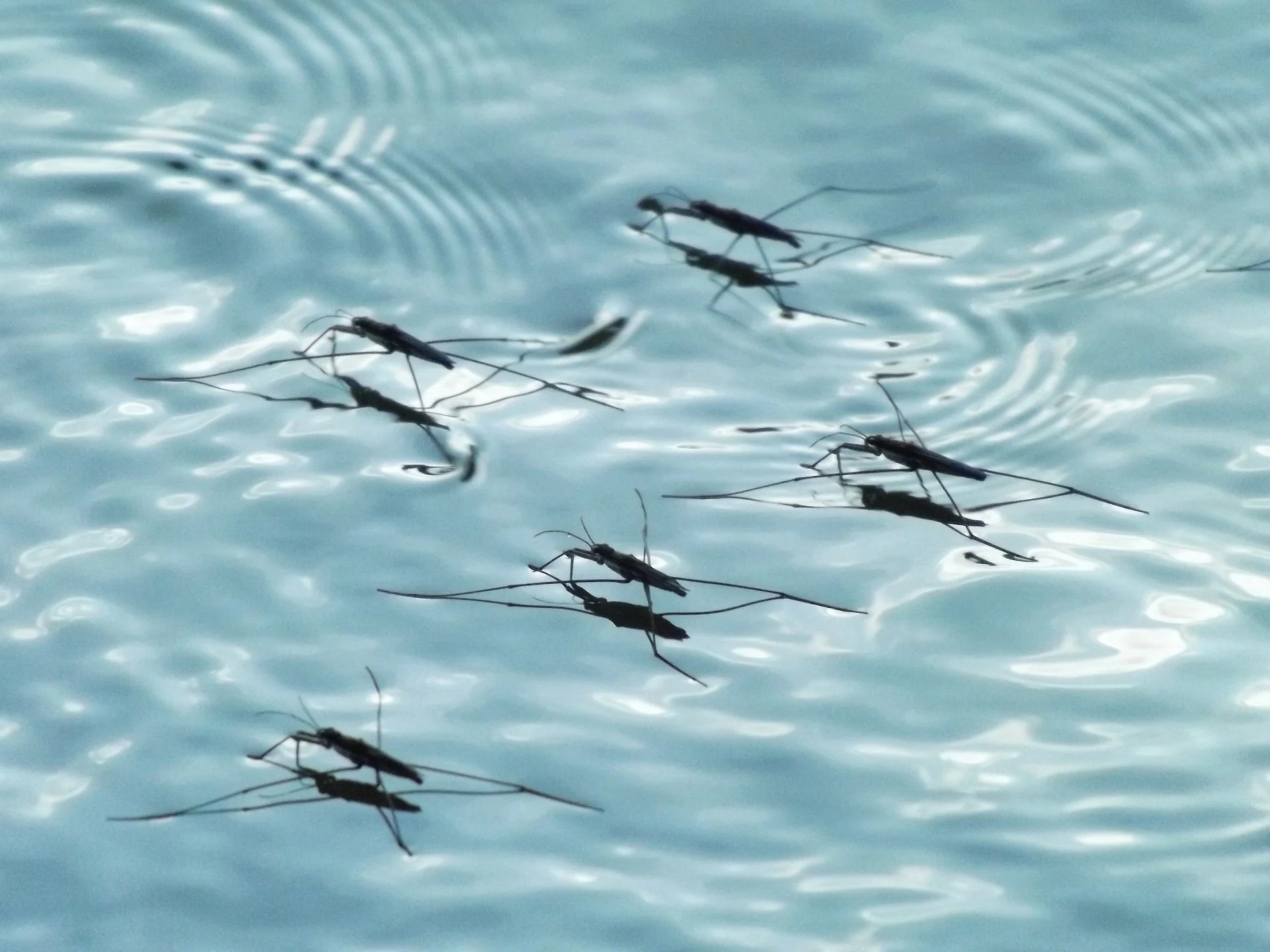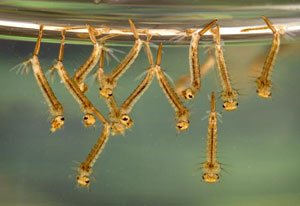How to Kill Mosquito Larvae Effectively?
Mosquitoes are not only annoying pests but also carriers of various diseases, such as malaria, dengue fever, and Zika virus. While most people focus on adult mosquitoes, it's important to understand that mosquitoes go through a life cycle that includes an aquatic stage, during which they are called larvae.

Mosquito larvae are the offspring of adult mosquitoes that have laid their eggs in standing water, such as ponds, birdbaths, or even old tires.
Mosquito larvae are responsible for the rapid spread of mosquito-borne diseases, as they can multiply quickly and reach adulthood in a matter of days. This is why it's crucial to take action to kill mosquito larvae before they become a public health hazard.
In this article, we will explore the different methods of killing mosquito larvae, including natural and chemical methods, and provide tips for preventing mosquito larvae infestation. By understanding the importance of killing mosquito larvae, you can take steps to protect yourself, your family, and your community from the harmful effects of mosquito-borne diseases.
Understanding Mosquito Larvae

Life Cycle of Mosquitoes
Mosquitoes have a fascinating life cycle that consists of four stages: egg, larva, pupa, and adult. The focus here is on the larval stage, which is crucial in understanding how to control mosquito populations.
Characteristics of Mosquito Larvae
- Mosquito larvae are aquatic creatures that thrive in standing water.
- They have a distinct appearance with a slender body and a breathing tube called a siphon.
Identifying Mosquito Breeding Grounds
To effectively combat mosquito larvae, it's essential to know where they breed. Common breeding sites include stagnant water in gutters, flower pots, and even bottle caps.
How to Identify and Monitor Breeding Sites
- Regularly inspect your surroundings for any standing water.
- Use mosquito dunks or larvicides in potential breeding areas.
Identifying Mosquito Breeding Grounds

Common Breeding Sites
Mosquitoes are opportunistic breeders and can lay their eggs in a variety of standing water sources. Understanding these common breeding sites is key to effective mosquito control.
How to Identify and Monitor Breeding Sites
- Inspect areas around your home for any stagnant water, such as flower pots, bird baths, and clogged gutters.
- Regularly empty and clean containers that can collect water, like tires and buckets.
Natural Methods to Kill Mosquito Larvae
Bacillus Thuringiensis Israelensis (Bti)
Bacillus Thuringiensis Israelensis (Bti) is a natural bacterium that can be used to kill mosquito larvae. It's safe for humans and animals but deadly for mosquito larvae.
How to Use Bti
- Add Bti granules to standing water sources, such as ponds and bird baths.
- Use Bti-infused mosquito dunks in areas where standing water cannot be easily drained, like flower pots and gutters.
Mosquito Predators
Encouraging natural mosquito predators, such as fish and dragonflies, can help control mosquito populations.
How to Attract Mosquito Predators
- Create a pond or water feature in your garden to attract mosquito-eating fish.
- Plant flowers and shrubs that attract dragonflies, such as water lilies and irises.
Chemical Methods to Kill Mosquito Larvae
Insect Growth Regulators (IGRs)
insect growth regulators (IGRs) are chemicals that interfere with the development of mosquito larvae, preventing them from maturing into adults.
How to Use IGRs
- Add IGR granules to standing water sources, such as ponds and bird baths.
- Use IGR-infused mosquito dunks in areas where standing water cannot be easily drained, like flower pots and gutters.
Larvicides
Larvicides are chemicals that kill mosquito larvae on contact. They are highly effective but must be used carefully to avoid harming other animals and the environment.
How to Use Larvicides
- Use larvicides in areas where standing water cannot be easily drained, like flower pots and gutters.
- Follow the manufacturer's instructions for safe use and disposal.
Preventing Mosquito Larvae Infestation
Eliminating Breeding Sites
The most effective way to prevent mosquito larvae infestation is to eliminate breeding sites. This involves removing standing water from your property and ensuring that containers and other items that can collect water are emptied regularly.
Tips for Eliminating Breeding Sites
- Empty bird baths and pet water dishes at least once a week.
- Clear debris from gutters and downspouts to prevent water buildup.
- Check for standing water in flower pots, planters, and saucers.
Regular Monitoring and Maintenance
Regularly monitoring your property for standing water and maintaining cleanliness can help prevent mosquito larvae infestation. This includes cleaning and maintaining ponds, fountains, and other water features.
Tips for Regular Monitoring and Maintenance
- Check for standing water after rainfall or irrigation.
- Clean and maintain ponds, fountains, and other water features regularly.
Frequently Asked Questions (FAQ'S)
Q. What is the best way to kill mosquito larvae?
The best way to kill mosquito larvae depends on the situation. Natural methods such as Bacillus thuringiensis israelensis (Bti) and encouraging mosquito predators can be effective, as well as chemical methods such as insect growth regulators (IGRs) and larvicides.
Q. How often should I check for standing water on my property?
It's recommended to check for standing water on your property at least once a week, especially after rainfall or irrigation. Regular monitoring can help prevent mosquito larvae infestation.
Q. Can I use chemicals to kill mosquito larvae in my pond?
Yes, you can use chemicals such as insect growth regulators (IGRs) and larvicides to kill mosquito larvae in your pond. However, it's important to follow the manufacturer's instructions for safe use and disposal to avoid harming other animals and the environment.
Q. What are some natural predators of mosquito larvae?
Some natural predators of mosquito larvae include fish, dragonflies, and mosquito-eating birds. Encouraging these predators can help control mosquito populations.
Q. How can I prevent mosquito larvae infestation in my bird bath?
To prevent mosquito larvae infestation in your bird bath, empty and clean the bird bath at least once a week. You can also add Bacillus thuringiensis israelensis (Bti) granules to the bird bath to kill mosquito larvae.
Q. Is it safe to use insect growth regulators (IGRs) around pets and children?
Insect growth regulators (IGRs) are generally safe for use around pets and children when used according to the manufacturer's instructions. However, it's important to keep the area where the IGRs are being used free from pets and children during application and for the recommended amount of time.
Conclusion
Summary of Key Points
In this article, we have discussed how to kill mosquito larvae using natural and chemical methods, as well as preventive measures to avoid mosquito larvae infestation. Here is a summary of the key points:
- Mosquito larvae can be killed using natural methods such as Bacillus thuringiensis israelensis (Bti) and encouraging mosquito predators, or chemical methods such as insect growth regulators (IGRs) and larvicides.
- Preventing mosquito larvae infestation involves eliminating breeding sites, such as standing water, and regular monitoring and maintenance of water features and other potential breeding sites.
Next Steps
If you are concerned about mosquito larvae infestation, here are some next steps you can take:
- Identify and eliminate breeding sites on your property.
- Consider using natural or chemical methods to kill mosquito larvae in areas where standing water cannot be easily drained.
- Regularly monitor your property for standing water and maintain cleanliness to prevent mosquito larvae infestation.
